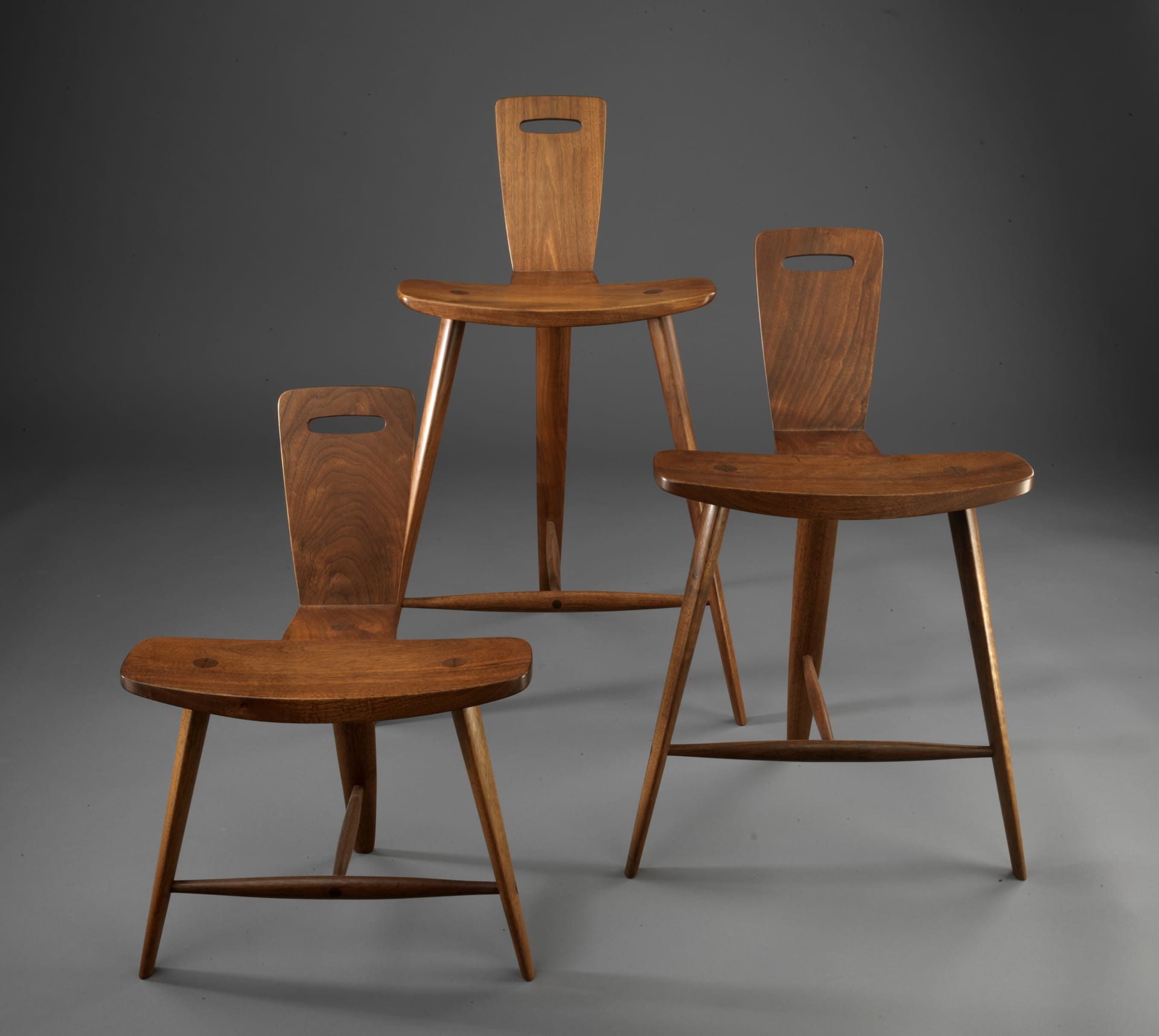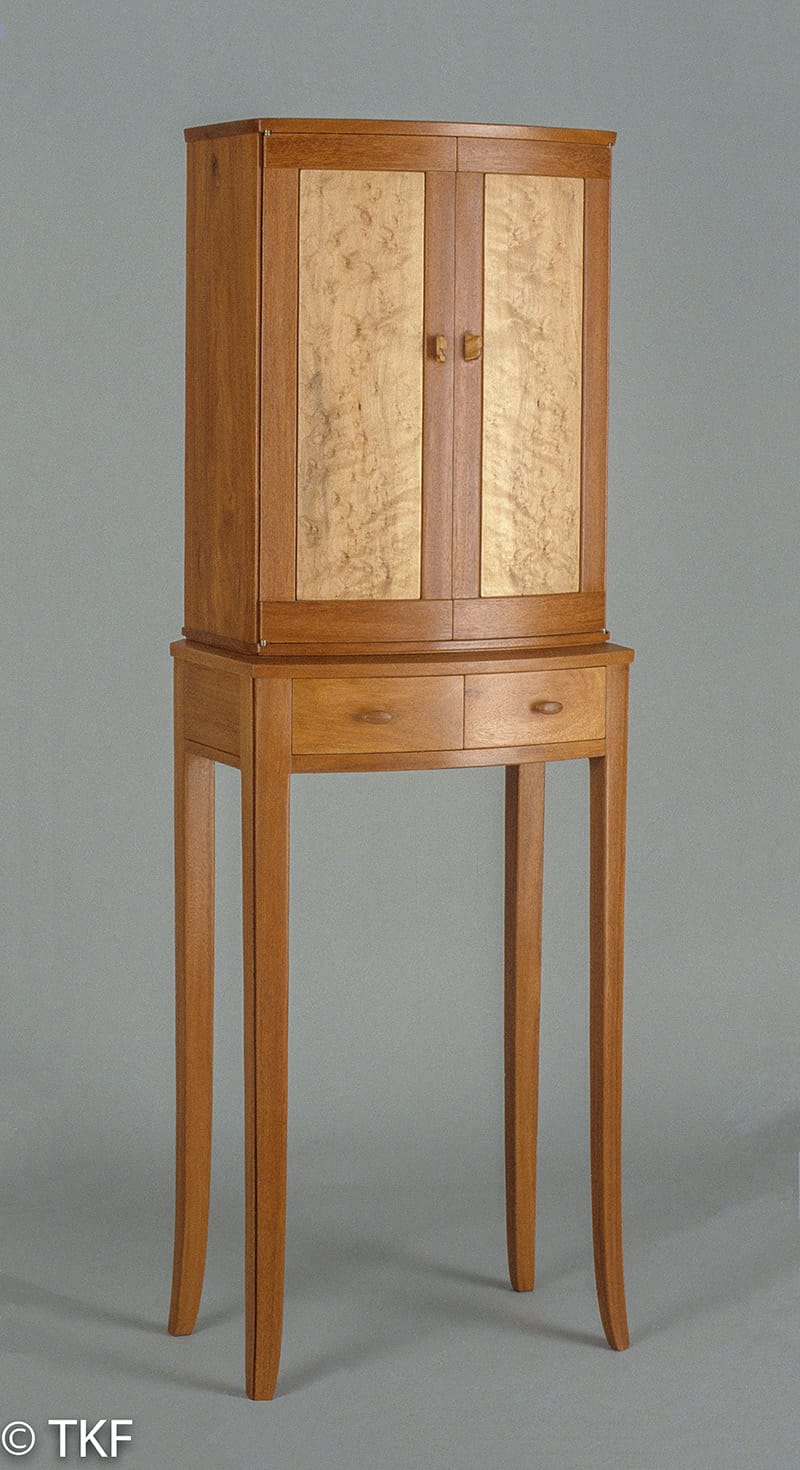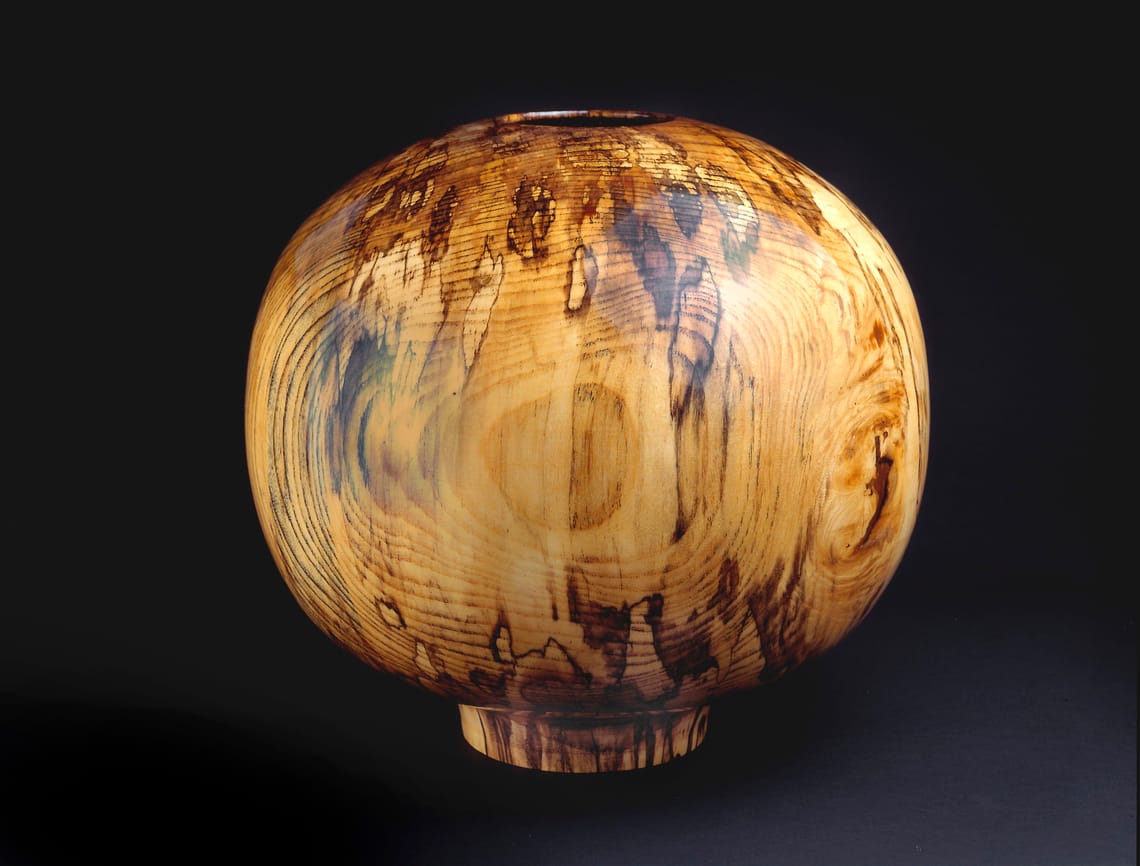The Legacy of Tage Frid
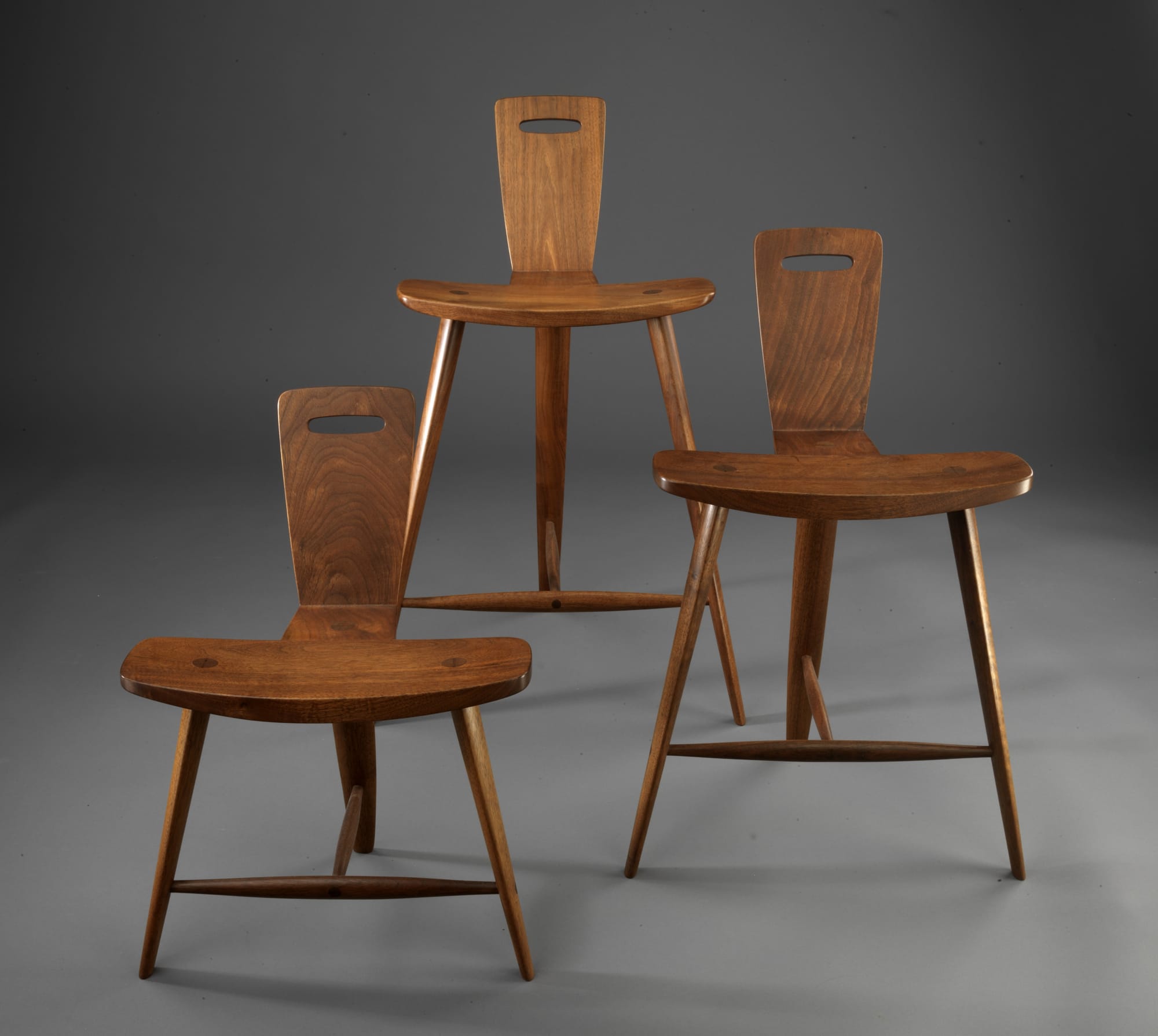
Tage Frid, a Danish-born woodworker, left an indelible mark on the world of furniture making. His influence extended far beyond his own creations, shaping generations of American studio furniture makers.
As a teacher, Frid shared his expertise at prestigious institutions. He taught at the Rochester Institute of Technology and later at the Rhode Island School of Design, inspiring countless students with his skills and philosophy.
Frid's approach to furniture making was both practical and artistic. He emphasized the importance of understanding wood as a material and mastering traditional techniques. This foundation allowed his students to push boundaries and innovate.
His legacy lives on through the work of those he taught and influenced. Many of today's most respected furniture makers can trace their artistic lineage back to Frid's teachings.
Frid's impact on American studio furniture is evident in the Renwick Gallery collection. His carefully crafted stools stand alongside works by other masters, showcasing the diversity and skill of studio furniture makers.
The principles Frid championed - attention to detail, respect for materials, and a balance of form and function - continue to guide furniture makers today. His legacy ensures that the art of woodworking remains vibrant and evolving in the United States.
Design Philosophy & Style
Tage Frid's furniture designs blend Danish-modern style with innovative approaches. His work showcases clean lines, simple forms, and a deep respect for natural materials.
Blending Tradition with Innovation
Frid's design philosophy merged traditional woodworking techniques with modern ideas. He believed furniture should be functional and well-crafted. His pieces often featured:
• Solid wood construction
• Precise joinery
• Minimal ornamentation
Frid pushed boundaries by experimenting with new forms. He created chairs with unique shapes and tables with unexpected angles. This approach set his work apart from other Danish-modern designers.
The Essence of Danish-Modern Style
Danish-modern style is key to understanding Frid's work. This style emphasizes:
• Clean lines
• Natural materials
• Functionality
Frid's furniture embodied these principles. He used light-colored woods like oak and ash. His designs focused on proportion and simplicity.
Frid paid close attention to detail. He carefully shaped each piece to be comfortable and practical. His chairs had gently curved backs. His tables had smooth, rounded edges.
Craftsmanship Techniques
Tage Frid's furniture is known for its exceptional craftsmanship. His methods blend traditional woodworking skills with modern approaches. He focused on three key areas: joinery, veneering, and finishing.
Mastery of Joinery
Frid excelled at joinery, the art of connecting wood pieces. He favored dovetails and mortise and tenon joints for their strength and beauty. His dovetails were precise, with tight-fitting pins and tails that showed his skill.
For mortise and tenon joints, Frid used both hand tools and machines. He taught that the key was in the fit - snug, but not too tight.
Frid also developed unique joinery methods. One was his "Tage Frid joint," a combination of dovetail and finger joint. This joint was both strong and visually striking.
Excellence in Veneering and Laminates
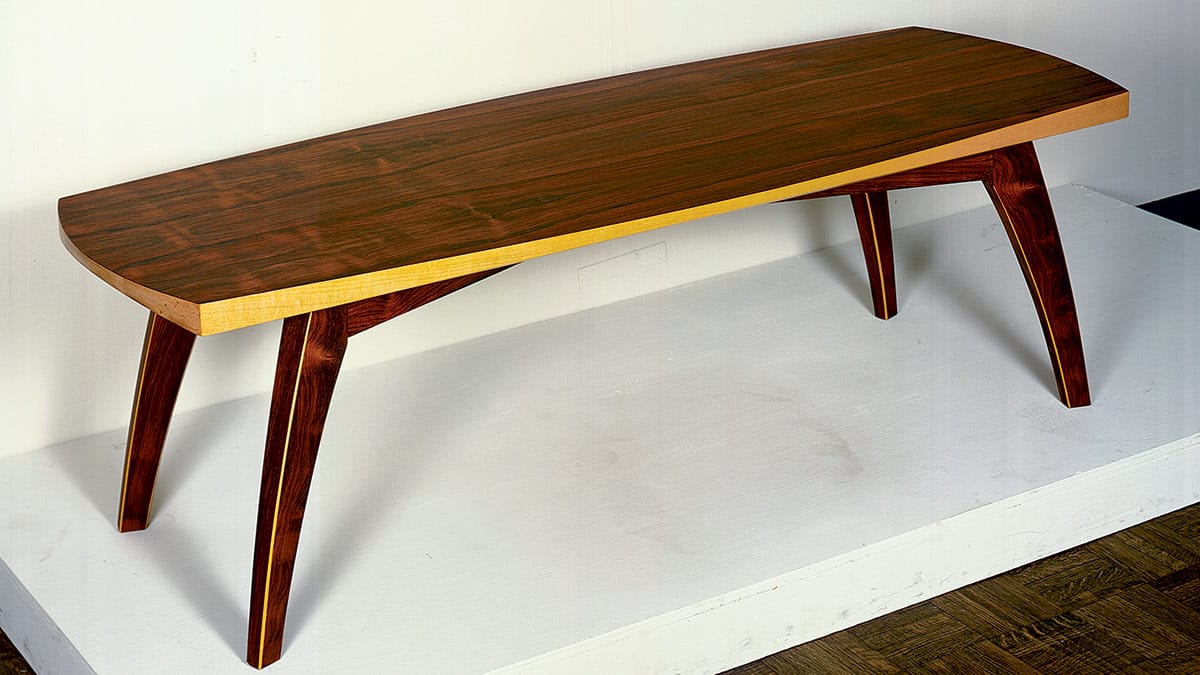
Frid was a master of veneering techniques. He used veneer to add beauty and stability to his pieces. His method involved careful selection of veneer sheets for grain and color.
He developed a technique for book-matching veneer. This created mirror-image patterns that added visual interest to his furniture. Frid also mastered bent lamination, using thin layers of wood glued together to form curves.
For complex shapes, Frid used vacuum bagging. This ensured even pressure and strong bonds. He often combined veneering with solid wood, creating pieces that were both beautiful and durable.
The Art of Finishing
Frid's finishing techniques were as important as his woodworking. He believed a good finish should protect the wood and enhance its natural beauty. Frid often used oil finishes, which he felt brought out the wood's depth and color.
For some pieces, he used lacquer or shellac. These finishes gave a glossy look while protecting the wood. Frid was known for his patience in finishing, often applying many thin coats for the best result.
He also developed special techniques for problem woods. For example, he had methods to prevent blotching on cherry and to bring out the figure in maple. Frid's finishes were always smooth and even, a hallmark of his craftsmanship.
Tage Frid as an Educator & Author
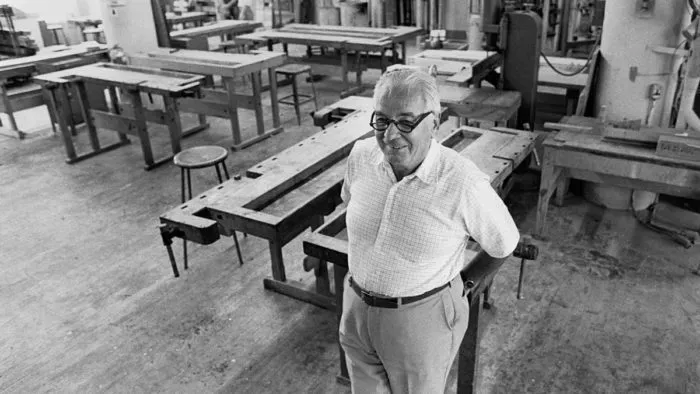
Tage Frid made a lasting impact on woodworking through his teaching and writing. He shared his expertise with countless students and readers, shaping the field for generations to come.
Pioneering Woodworking Education
Frid began his teaching career at the School for American Craftsmen in Rochester, NY. He later joined the faculty at the Rhode Island School of Design, where he taught for over 25 years.
His classes were hands-on and practical. Students learned by doing, with Frid guiding them through complex techniques. He emphasized problem-solving and encouraged creativity.
Frid's teaching style was direct and no-nonsense. He pushed students to excel, often through tough love. Many of his former students went on to become respected furniture makers and educators themselves.
Influential Publications
Frid's impact extended far beyond the classroom through his writings. His most famous work was a three-volume series titled "Tage Frid Teaches Woodworking."
These books covered everything from basic skills to advanced joinery. They featured clear instructions and detailed drawings. The books became essential reading for woodworkers of all levels.
Frid was also a frequent contributor to Fine Woodworking magazine. His articles shared tips, techniques, and project plans with readers. The magazine's publisher, Taunton Press, later released a DVD of Frid's teachings.
Signature Furniture Pieces
Tage Frid crafted iconic furniture pieces that showcased his skill and design philosophy. His work combined functionality with elegant simplicity, creating timeless pieces that remain popular today.
The Iconic Tage Frid Stool
The Tage Frid stool is perhaps his most recognizable creation. This three-legged stool features a distinctive curved seat and tapered legs.
The stool's design emphasizes both comfort and stability. Its graceful lines showcase Frid's mastery of woodworking techniques.
Many woodworkers have attempted to recreate this piece, making it a popular project for furniture makers. The stool's enduring appeal lies in its simplicity and functionality.
Elegant Tables and Cabinets
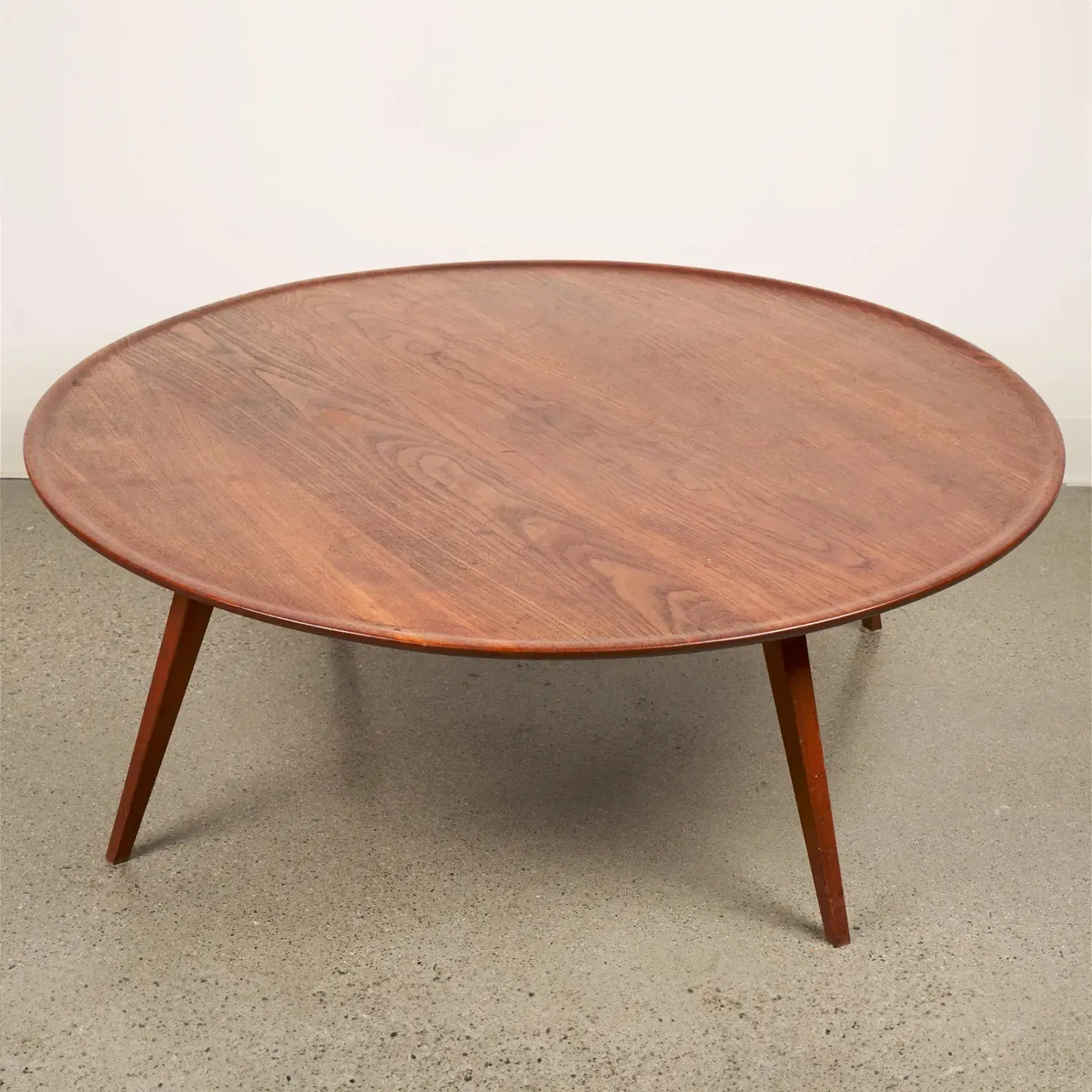
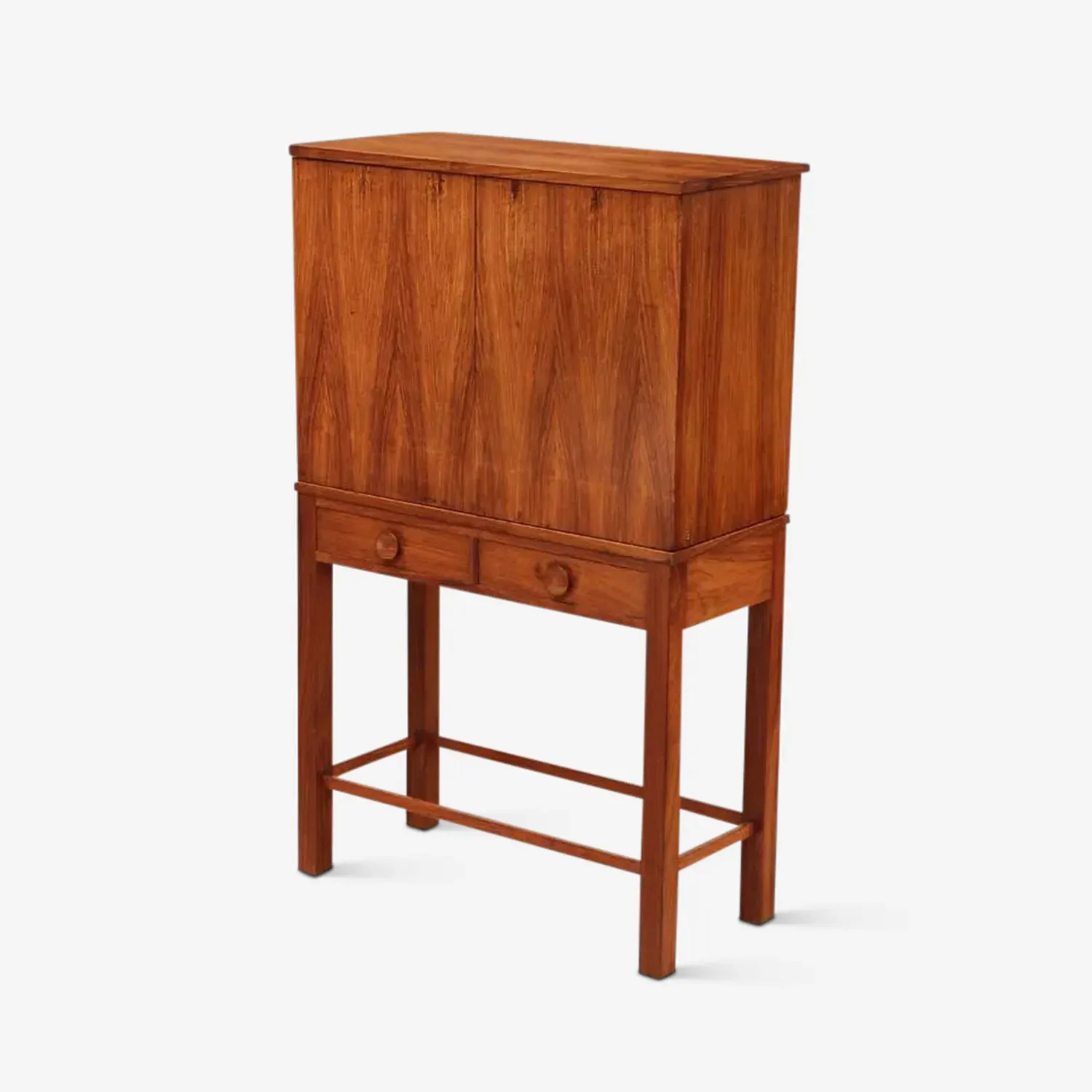
These ones are available to buy at: https://modernegallery.com/works/furniture/tage-frid-early-round-coffee-table/ and https://modernegallery.com/works/furniture/storage/cabinets/bar-by-tage-frid-c-1955/
Frid's tables and cabinets exemplified his commitment to clean lines and practical design.
His table designs often featured sturdy legs and smooth, unadorned surfaces.
Cabinets crafted by Frid prioritized storage and accessibility.
He incorporated clever joinery techniques to ensure durability.
One notable piece was his grandmother clock. This project combined traditional timekeeping with Frid's modern aesthetic sensibilities.
His furniture making approach emphasized the natural beauty of wood.
Frid often chose to highlight grain patterns rather than hide them.
The Functional and Timeless Chair
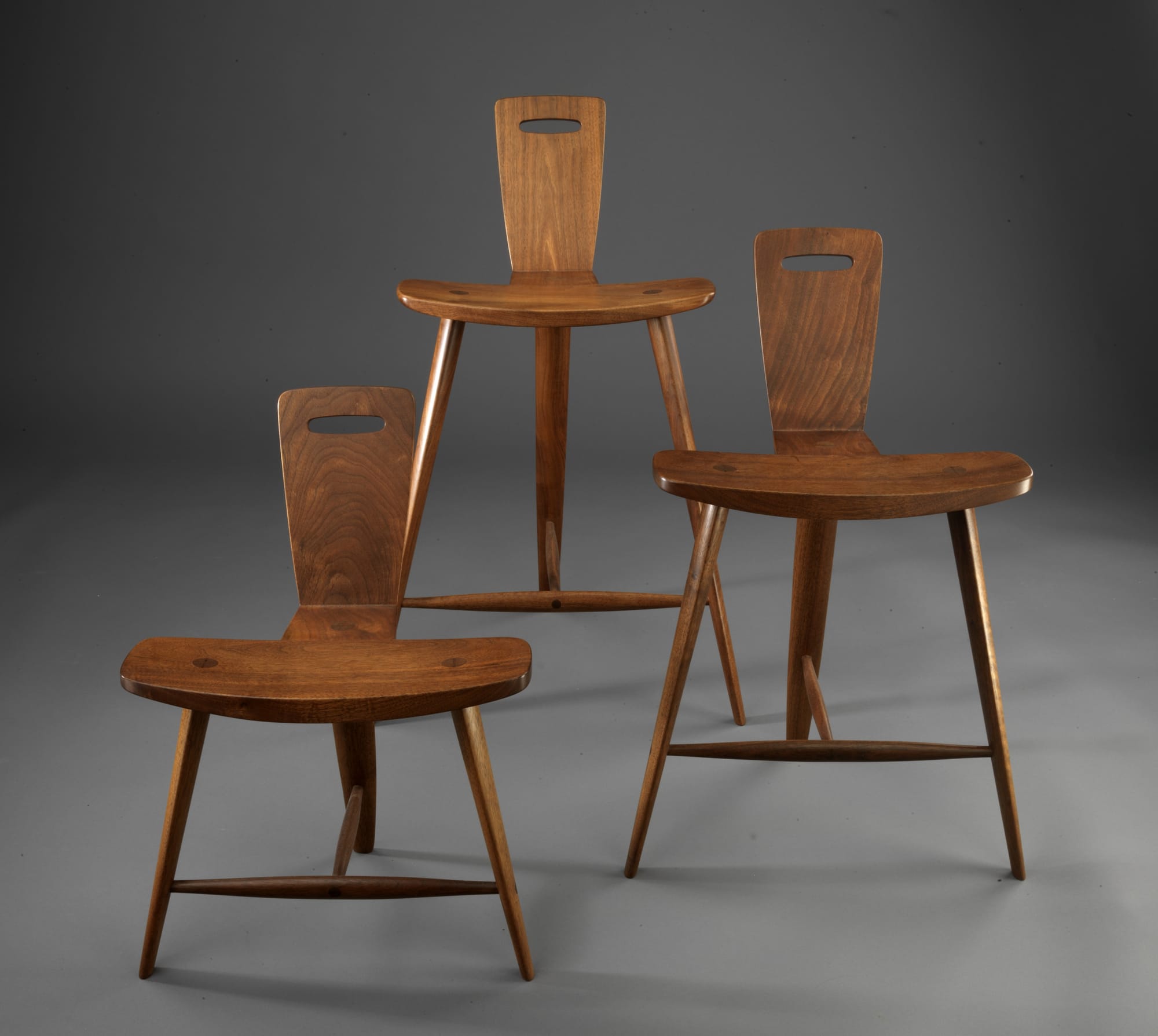
Chairs held a special place in Frid's body of work. He believed a chair should be comfortable, durable, and visually pleasing.
His chair designs often featured gently curved backrests and carefully angled seats.
These elements ensured proper support for the sitter.
Frid paid close attention to joint construction in his chairs.
This focus on structural integrity meant his pieces could withstand years of use.
Many of his chair designs became popular among other furniture makers.
They appreciated the balance of form and function in Frid's work.
Frid's Impact on the Studio Furniture Movement
Tage Frid played a key role in shaping the studio furniture movement. His influence spread far beyond his classroom at the Rhode Island School of Design.
Frid's teaching style focused on craftsmanship and design.
He taught students to create handmade furniture with both function and beauty in mind.
Many of Frid's students went on to become leaders in the field.
Rosanne Somerson, for example, later became president of RISD and a respected furniture maker herself.
The studio furniture movement grew in part thanks to Frid's emphasis on blending traditional techniques with modern design.
This approach appealed to a new generation of craftspeople.
Frid's impact reached beyond his own students.
His books and articles shared his knowledge with a wider audience, inspiring furniture makers across the country.
The American Craft Council recognized Frid's contributions by naming him a Fellow in 1980.
This honor highlighted his importance to the craft world.
Frid's legacy continues today.
His ideas about combining skill, creativity, and practicality remain central to the studio furniture movement.
Contact Us for a Custom Furniture Piece
Creating custom furniture is an art that blends craftsmanship with personal vision. Tage Frid's influence on furniture design continues to inspire artisans today.
For those seeking a unique piece that embodies Frid's principles, reaching out to a skilled woodworker is the first step. We welcome the opportunity to bring your ideas to life.
When contacting, be prepared to discuss:
- Your design preferences
- Intended use of the piece
- Preferred wood types
- Budget considerations
- Timeline expectations
Clear communication is key to ensuring the final product meets your needs. Providing sketches or inspiration photos can help convey your vision.
We offer custom tropical hardwood furniture for a distinct aesthetic. These pieces often showcase the natural beauty of exotic woods.
Remember that custom work requires time and patience. Quality craftsmanship cannot be rushed, but the result is a one-of-a-kind piece that will last for generations.
You can create furniture that honors Tage Frid's legacy while reflecting your personal style. The process of commissioning custom work is both exciting and rewarding.
F.A.Q.
How to contact us?
- For commission work or pieces, contact us here, simply contact us via e-mail at jefh@jefhwoodshop.com
How Much Does It Cost to Custom Build a Piece?
It really depends on the piece, but from the start, we can say that it costs more than what you can find off the shelf. You ask for a custom piece when you want something one-of-a-kind, not easily or possibly found elsewhere, or made to your specifications.
Given the nature of our custom builds, it is extremely rare to find any piece below $1,000 unless you're talking about very small items or simplistic builds, which are rare.
Here are some examples of price ranges:
- Nightstands: $800 to $2,500
- Beds: $4,500 to $10,000
- Dining tables: $3,500 to $12,000
- Chairs: $800 to $2,500
- Consoles, credenzas, etc.: $2,500 to $7,000
Again, there is no fixed price. Each piece is quoted based on wood selection and complexity.
What Woods Do We Work With?
We primarily work with tropical hardwoods, and you can read about some of our favorites here. The reason for this is our focus on tropicalized furniture.
- Teak
- Yellowheart
- Tigerwood (Zebrawood)
- Spanish Cedar
- South American Mahogany
- Santos Mahogany
- Purpleheart
- Ipe
- Cumaru
- Cocobolo
That said, we are more than happy to work with domestic species from the USA, as this is the best way to balance price and minimize the environmental footprint of importing international wood.
There are some incredible domestic woods we have access to, such as:
- Walnut
- Oak
- Maple
- Cherry
- Ash
- Hickory
- Birch
How Long Does It Take to Build a Piece?
Typically, it takes 4 to 8 weeks, but the main factor will be availability. Get in touch, and we can discuss when we could start.
Where Are You Located and Where Do You Deliver?
We are currently based in South Florida, specifically serving the local Palm Beach County area. We offer white-glove delivery throughout most of Florida. We also accept orders from outside of Florida, both nationally and internationally, but this will depend on how safely we can either deliver the piece ourselves or ensure proper packaging for shipping.
